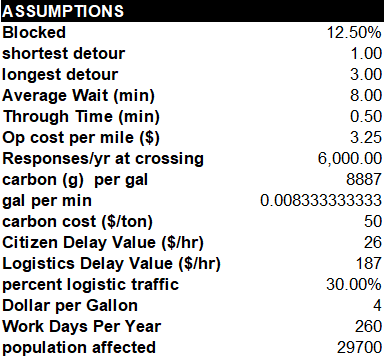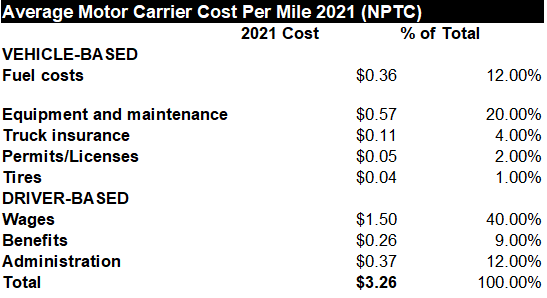If your municipality is not using Predictive Mobility right now. Then, the citizens are paying a surprising cost! This is true in the City of Kenosha. The railroad was first laid in Kenosha in the 1850’s. Subsequently, the city grew its industrial powerhouse in the early 1900’s. The rail traffic that creates congestion and safety issues in Kenosha is still operating with warning devices devised in the 1800’s. Predictive Mobility offers a new technology that reduces congestion and increases safety by using advanced warning of blocked crossings to direct traffic to avoid the blocked crossing.
Rail congestion is a growing problem across the US. Here, we specifically look at the problem in Kenosha at 60th Street on the west side of the city. We perform the analysis following the Department of Transportation studies at the federal and state level summarized on our site here.
Rail safety is essential for everyone – motorists, pedestrians, bicyclists, motorcyclists, bus and truck drivers. There are more than 4,030 railroad public crossings and 3,300 miles of active train tracks in the state of Wisconsin.
- Every three hours a person or vehicle is hit by a train in the United States.
- As a motorist, you are 40 times as likely to die in a crash with a train as in other motor vehicle crashes.
- Every year 1-2 people are involved in an accident with a train in Kenosha County.
7 million vehicles go over crossings at 60th Street in a Year!
Every year 6,570,000 vehicles cross over rail crossing at 60th Street in Kenosha. This is 18,000 vehicles per day or 13 vehicles every minute. Freight trains can be more than mile long and block crossings an average of 12.5% of the time. In some communities these blockages average 20% of the day for an average of 8 minutes. (NOTE commuter trains are usually short, follow more predictable schedules and are typically do not cause traffic congestion). On 60th St in Kenosha, freight train delays amount to 821,250 vehicles per year waiting for 110,000 hours per year!
$200,000 in Excess Fuel Costs!
810,000 vehicles waiting a crossings burn only 0.083 gallons per minute. Astonishingly, at $4.00 per gallon, this means that at 60th Street citizens are spending $219,000 a year waiting at crossings.
487 tons of Excess Carbon Launching into the Atmosphere per year!
810,000 vehicle burn 0.084 gallons per hour producing 8887 grams of carbon per gallon translating into 487 tons of carbon per year. This costs society $50 per ton of carbon yielding a total yearly cost of $24,000.
$51,000 in Excess Operational Costs for Emergency Responders
Emergency crews can’t afford to wait at crossings when lives are on the line and their goal is to reach patients within 4 minutes. It is typical for emergency crews to detour around rail crossings to avoid being delayed by trains. This typically means an extra 1 to 3 miles and 2 to 5 minutes of delay. The extra excess operational costs of these detours, at $3.25 per mile, means right now, Emergency services are spending nearly $51,000 per year dealing with crossings in Kenosha.
$2 Million of Citizen Costs and $4 Million of Supply Chain Costs!
The TRANSPORTATION RESEARCH BOARD studies the costs and delays of rail/highway accidents. They assign $26 per hour as the cost of delays to citizens and $187 per hour as the cost to logistics and other highway-based supply chain traffic. 30% of the 810,000 vehicles crossing over rails are logistics and supply chain vehicles. This means that citizens are loosing $1,992,900 a year and logistics companies are loosing $2,839,843 in opportunity costs per year in Kenosha.
This is only the problem at 60th Street!
We have only analyzed the problem at 60th Street. There may be other problem areas.

Predictive Mobility Reduces Congestion and Increases Safety
Predictive Mobility solves the problem of highway traffic congestion and blocked emergency vehicles at grade level rail crossings by providing advanced warning and ability to avoid blocked crossings all together. See the LinqThingz videos describing Predictive Mobility here.
Congestion and emergency response delays at rail crossings have a significant impact as described in a 2021 Senate report. see https://bit.ly/3InzlY5 Traditional warning devices are ineffective to prevent over 60% of at-grade rail accidents as described in an Federal Railway Administration report. see https://bit.ly/3M1DgMg Predictive Mobility is a new category of solution that directs vehicles away from blocked crossings and avoids the problem all together. see https://bit.ly/3MekpOi There are $5B approved and appropriated to improve safety at rail crossings as described in Build Better America Guidance. see https://bit.ly/3LWYPh7 The bill is likely to fund only a fraction of requests. Funding Predictive Mobility approach with the budget of ONE bridge could provide immediate relief for ALL the top problem crossings described in the senate report.
The Assumptions and Calculated Data
The basic assumptions used for the calculations is here:

The cost of operating a fire truck was estimated by using NPTC for a truck and adding 3 additional crew members.

Here is a copy of the complete spreadsheet.

